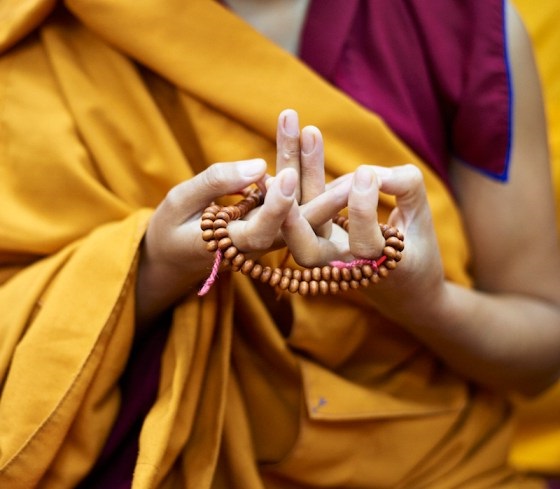
What you need to know about Buddhist Mala – Tibetan Prayer Beads
If you are into meditation or yoga, you have probably seen mala beads before. They can also be found in paintings or sculptures of Buddha, where he is seen holding them. In fact, it is quite a common sight, but not everyone knows where they come from and what they are used for. This article will answer these questions and describe how they should be used during meditation sessions.
Where do Buddhist Mala Beads come from?
Mala beads have already been used in the world for thousands of years. They are at the very core of meditation purposes, in many different countries and culture. Their first appearance was noted in India and Nepal, but they have been part of history, throughout time, all across the planet.
The beads are called malas, but they are also known as japa malas. They are joined together through a string, and they contain a precise number of beads. The most common Buddhist mala is made of 108 balls. Each bead represents a breath or a mantra, on which you focus on as you leave one, and move on to the next. They are the representation of spiritual identity and our connection to the universe.
Today, they are used in many different meditation techniques. Although they are linked to traditional prayers, anyone can start using a mala, to bring them closer to peace of mind, without prior knowledge. The process of meditation beads is that it creates a positive spiritual energy. This is called “japa”, which is why they are sometimes called “japa malas.” Every mala is unique and should be treated as such.
Which Materials are used to create Traditional Malas
There is a variety of materials that can be used to create a traditional mala, but most of the time they are organic ones, like plant seeds, wood and animal bones.
Seeds
Seeds are the preference as they refer to the first malas, back in time. In Buddhism, it is said that the master (Buddha) was enlightened while sitting underneath a fig tree. That is why the seeds from trees are particularly favoured. To believers, they contain spiritual and healing power, which is transferred into them, as they meditate using the mala beads.
Bones and wood
Tibetan prayer beads are usually made with carved bones. This material holds a particular significance to them. It reminds them that we should feel compassion for others, as we go through life and the impermanence of all living things. The second most popular are beads of wood or tagua nuts. They represent the earth and our link to it. It is a great way to remind us that we are part of this earth and to open up to the world.
Gemstones and Other Materials
Each gemstone possesses a healing property specific to it. That is why some people prefer to meditate with a specific gemstone, according to what they are looking for. For example, rose quartz leads to compassion, lapus to peace of mind and amethyst to clarity. Over time, a whole variety of materials have been used to create mala beads. You can find them made out of metal or shells. Just stay away from all non-organic materials (like plastic for example).
Sometimes, the beads will be painted with words, symbols or mantra. You can also do that part by yourself, if you want to make it more personal, since Mala beads are unique to every individual and are not meant to be shared. They are symbolic and represent something important to its user that helps him meditate.
How to meditate using Buddhist Mala Beads
Meditating does not necessitate anything, only somewhere calm where you can sit, without having to worry about anything. Prior knowledge of prayers, rituals or even traditions can be useful, but they are facultative. Since each bead should represent a thought or a breath, it is up to you to choose which they are, and then focus solely on it, as you keep one bead between your fingers. Once you change and move on to the next one, any previous thought should leave you to make place to the next one, exclusively.
Place the mala in your left hand and grab the bead next to the Guru bead (it is the one larger than the others, which indicates the beginning of the chain) between your index and your thumb. Before you start focussing on your first thought, you need to breathe deeply, for as long as necessary, until you feel completely relaxed. Only then can you start the process of meditation and moving from one bead to another.
As you move along, the repetitive movement will calm your central nervous system. With each bead, choose a new mantra or prayer. As you arrive on a new one, mention the word representing the emotion (love, peace, etc.), or simply say “Om” as many do. If you lose your concentration, go back by one bead and start again.
